What Does Miso Taste Like?
When you buy through our links, The Breslin may earn an affiliate commission. Learn more
What does miso taste like? This ingredient from Japan has become so famous that many people are discussing its flavor. Suppose you are one of them who wants to know more about miso; this post is all you need.
Miso is a savory ingredient and has thousands of versions all around the world. There are plenty of ways to use miso, from making broth for noodles, creating unique butter to making the legendary miso soup.
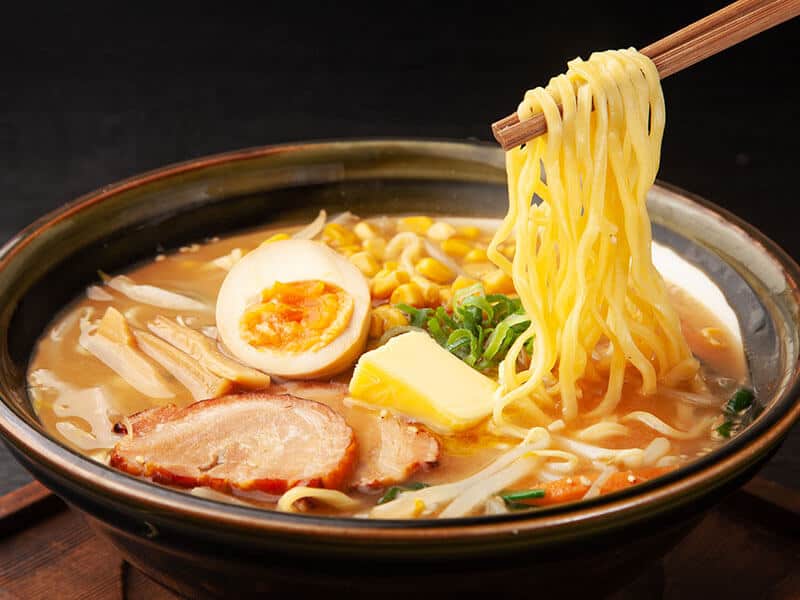
All you need to do right now is to sit down and hop on this post; I’m sure you will have an interesting expedition.
Wait… What Is Miso?
Do you really know about miso? The important step to comprehend one particular ingredient is to know some basic information about it. So let’s explore some interesting facts about miso.
A Brief Information About Miso
Miso is a final product from fermented soybeans and other ingredients like barley or rice malt. After being cultured with koji, a name of a kind of mold, the beans will turn into a thick and crumbly paste.
Miso was created centuries ago, and it has a heroic story. Miso provides sufficient energy and nutrition in just a short time to prepare. Therefore, miso soup was one of the samurai’s quick meals back in the Kamakura period (1185–1333)(1).
Health Benefit Of Miso
Miso isn’t just prominent for its story and flavor. The ingredient also has a great nutritional package, which is a suitable choice for those who care about making healthy meals.
Miso is a gluten-free ingredient because there is no gluten added or created while making this tasty ingredient.
Traditionally, miso is made by fermenting soybeans; however, some manufacturers use other ingredients like chickpeas or adzuki beans in the fermenting process (2). These ingredients, in general, are rich in protein. This makes miso become a perfect protein source.
Miso is also a great source of isoflavone (soybeans type); in recent research, isoflavones in soybeans are proved to have a positive impact on certain diseases (3). If you are a health enthusiast, miso recipes are must-try dishes for you.
Miso Flavor In A Nutshell
Let’s take a quick look over these flavorful miso pastes. This chart will give you a clearer picture of miso’s savor.
In case the brief information does not satisfy your ambition, let’s discover the details below.
Demystifying The Flavor Of Miso
The flavor of miso is different from each type with various ways of producing it. I have picked out some magnificent variants of miso; these are the common miso that you can find in the supermarket and give them a try.
Flavor Of Miso Categorized By Color
You can recognize different types of miso just by looking at its color. Miso paste with a brighter color will have a lighter and milder taste, while darker miso will have a deeper and saltier flavor.
White Miso (Shiro Miso)
White miso is the most friendly type of miso that everyone can taste without unpleasant feelings. This miso is made from soybean and a significant amount of rice, and it has a white or beige color.
White miso has a mild yet sophisticated nutty taste. This miso is the youngest, requiring the shortest duration for fermenting (at least three weeks).
Shiro miso is very versatile in cooking, from soup, sauce, or even salad dressings, this type of miso will give a dedicated sweet flavor to the whole dish.
Prominent variant:
- Saikyo Miso: This miso was a famous ingredient for making royal meals. It is made of rice and soybeans with a creamy pale color. Saikyo miso has a unique sweetness that will create a comfortable feeling for your recipes.
You can use saikyo miso for making sweet and gentle sauce or miso soup; the outcome will amaze you.
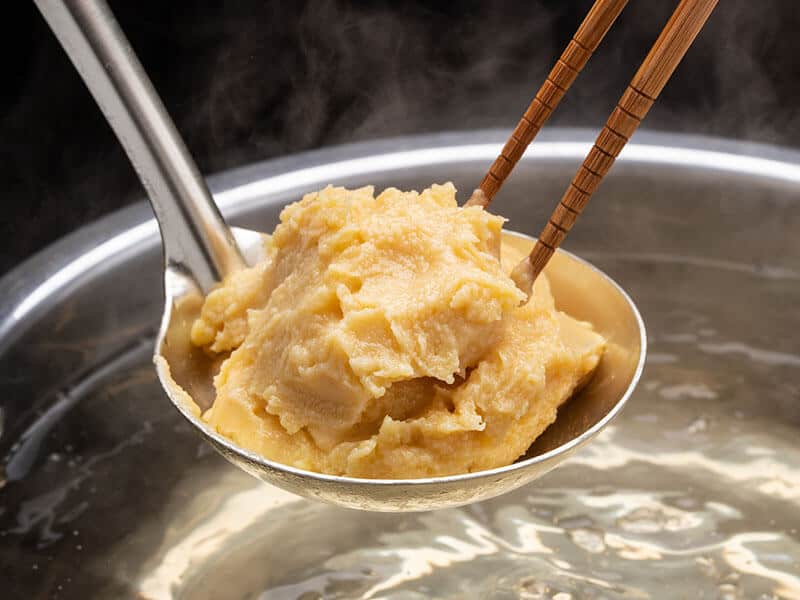
Yellow Miso (Shinshu Miso)
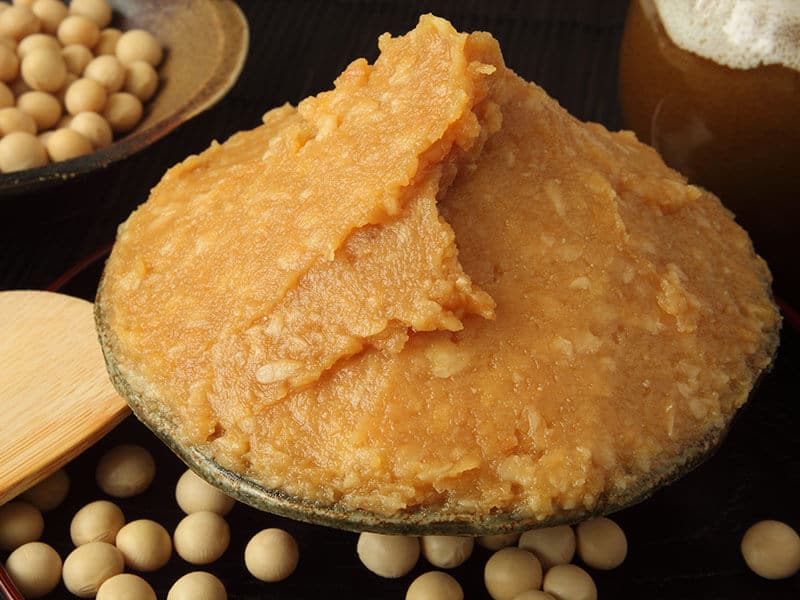
Yellow miso is saltier than white miso due to the longer fermented duration. However, its taste is still light and gentle, which will give you a comforting feeling after trying it. Also, yellow miso is a little sourer than white miso.
The main ingredients in this miso are soybeans, barley, and salt, which result in a beautiful beige or creamy-yellow color. The quantity of soybeans and barley added in yellow miso is higher than the quantity called in making white miso.
This miso is as versatile as white miso in cooking; you can apply it in making salad or marinades to have a nice, earthy, and refreshing flavor.
Red Miso (Aka Miso)
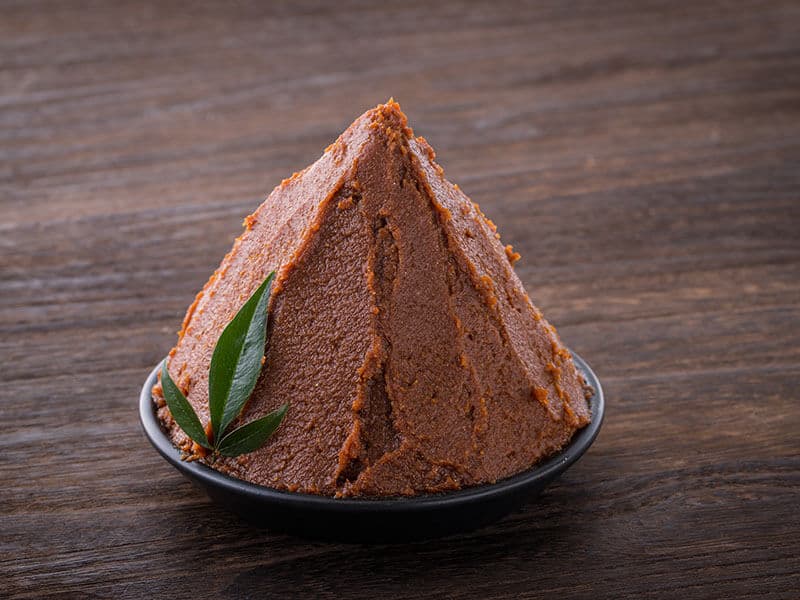
Red miso has a dark-red or brown color; this type of miso needs to ferment the soybeans with barley or other grains (depending on the manufacturer) for up to three years (longer than white and yellow miso).
If you want to make red miso, it is required that the amount of soybeans takes a more significant proportion than other ingredients. The outcome is a nice burgundy miso paste with a deeper and flavorful taste.
Due to the long fermenting duration, red miso provides a solid saltiness for your meal. So keep in mind that you might have to adjust the quantity of red miso added to your dish.
You can use miso in making marinated sauce, soup, or glazes to bring out a robust and hearty savor.
Mixed Miso (Awase Miso)
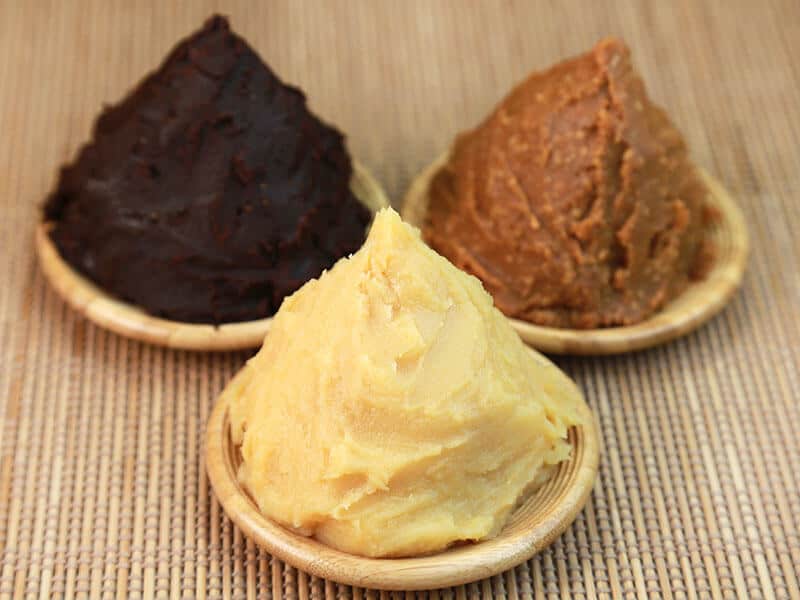
Mixed miso is as simple as its name; basically, this miso is mixed from red miso with white miso. The final product is a flawless light brown miso with a delicate nutty flavor.
Awase miso still has a significant salty savor from red miso, but it is mellow and lighter due to the white miso paste mixed with it.
Flavor Of Miso Categorized By Ingredients
Did you know that miso flavor can magically change depending on the added ingredient? If not, keep scrolling because these types of miso are really tasty!
Rice Miso (Kome Miso)
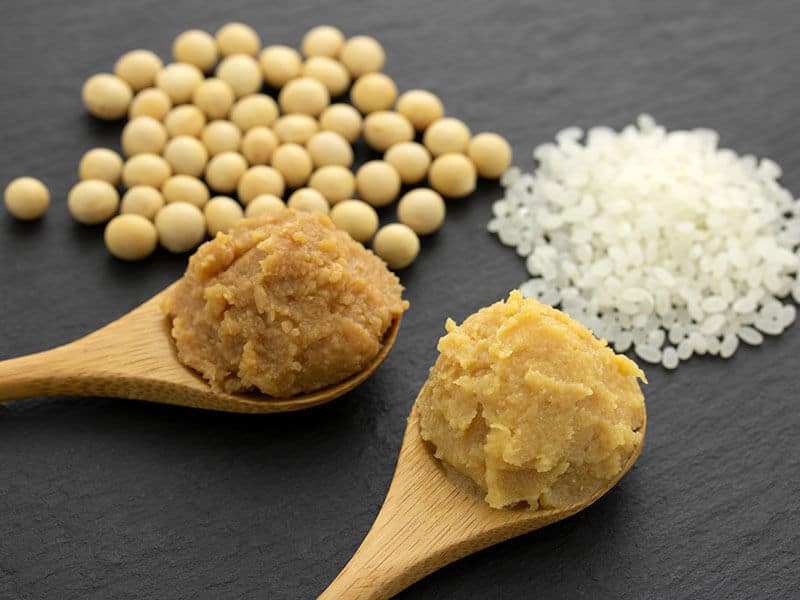
Instead of soybeans, Kome miso has rice and soybeans as the main ingredients. You can find a unique smell of rice in this type of miso. Rice miso can have a white, yellow, or red color depending on the fermented time and type of rice used in making the miso paste.
The way of processing soybeans can affect the color of the final miso paste. Fermenting boiled soybeans will create a white color for the miso paste, while using steamed soybeans will result in red miso.
The fermented duration can last from 6 months to 1 year; the savor gets saltier, deeper, and more complicated as time goes by.
With two friendly ingredients like rice and soybeans, kome miso is popular due to its gentle, sweet taste. Keep in mind that if you provide sufficient fermenting time, you can have a strong and pungent flavor of red miso.
Prominent variant:
- Genmai miso: This miso is made from fermenting brown rice, soybeans, and salt from 6-18 months. Genmai miso is popular for its medium-strong and nutty flavor. You can use genmai miso to substitute red miso for a hearty and flavorful dish.
- Sendai miso: This rice miso is named after the Sendai city in Japan. Rice and soybeans are the main ingredients that create a brown-red color and a thick texture.
Sendai miso has a fragrant aroma which is usually used for creating a deep and rich flavor to soup and sauce recipes.
Barley Miso (Mugi Miso)
Barley miso is a gorgeous combination of barley (polished or unpolished) and soybeans. After fermenting with salt and koji culture, you will have beautiful mugi miso with a magnificent earthy aromatic smell.
Barley miso color varies from red-brown to dark brown color. The darker the miso color, the stronger the flavor as it is fermented longer. Mugi miso needs roughly three years to fully age and forms its signature flavor.
Barley has quite a unique scent that might not be suitable for certain recipes. However, if you are seeking an extraordinary miso paste, barley miso is a must-try.
Barley miso has a bold and saltier flavor compared with rice miso. It still has a signature sweet taste from miso which will satisfy miso lovers.
Prominent variant:
- Karakuchi Mugi Miso (Barley Miso): The miso paste is made from polished or unpolished barley. This is the most famous barley miso variety with a deep salty and sweet flavor.
- Amakuchi Mugi Miso (Mellow Barley Miso): Mellow barley miso has a shorter aging time than the ordinary barley miso. This results in a lightly sweet taste of Amakuchi Mugi miso.
However, its flavor is still considered deeper and richer than red or white miso. This miso has a red-brown or yellow-brown color. Japanese usually use Amakuchi Mugi miso to make dengaku – a traditional miso-glazed Japanese dish.
For those people who love the nutty flavor of barley, this miso is a giant hug for you!
Soybean Miso (Mame Miso)
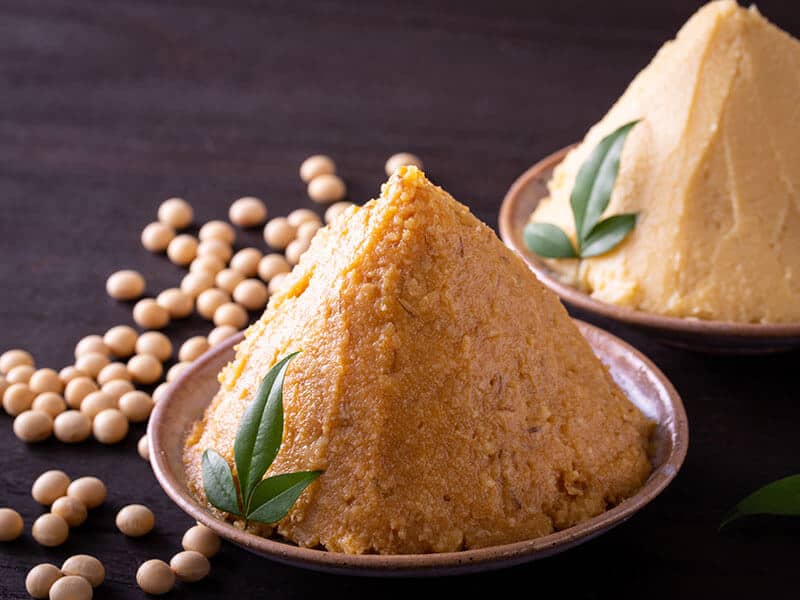
Mame miso is produced entirely from soybeans with other spices. This means this type of miso has a significant soybean flavor.
Normally, the color of mame miso is red or dark red which can tell that it has a slightly sweet, earthy, and highly savory taste. It can be a bit salty if the ingredients are fermented for a long duration (roughly two years).
Prominent variant:
- Hatcho Miso: This miso is a result of fermenting soybeans and salt for 16-24 months. Hatcho miso has a red or dark brown color with a super thick texture. This miso has an intense salty flavor along with a mild sweetness.
There are many types of hatcho miso across Japan but the one originating from Aichi province is the most popular.
- Ichinen Mame Miso (One Year Soybean Miso): Ichinen mame miso also uses soybean as a main ingredient, just like Hatcho miso. But the fermented duration is reduced to around one year and more water is added during the production.
The koji used to ferment this miso is made from a special mold called Aspergillus oryzae. So, Ichinen mame miso has a brighter color and a gentler rich taste with a tender texture compared to Hatcho miso.
- Tamari Miso (Moromi Miso): Along with the production of making Tamari sauce, moromi miso is made from fermented soybeans with koji mold. Tamari miso has a dark color as soy sauce with a rich and sweet flavor.
Tamari miso has a thick consistency and a subtle aromatic smell. You can also taste a little smoky flavor in certain bottles of Tamari miso on the market.
How Can You Cook With Miso Paste?
Wow! Miso has quite a lot of variants with amazing flavors. Little did you know that miso also has many ways to turn it into an appealing dish. It’s time to see what are some ways you can cook with miso paste.
Soups
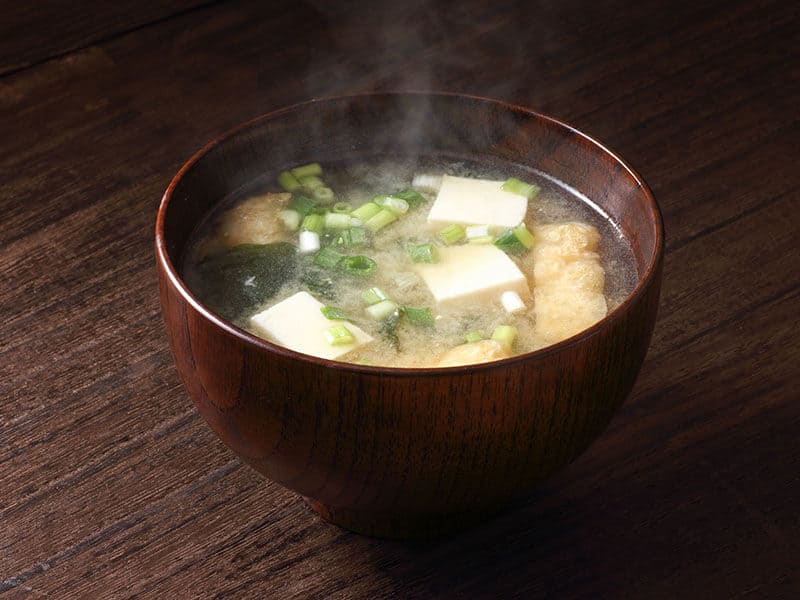
Soup, without questions, is the most common way to use miso paste. When making soup with miso paste, it gives a savory and refreshing flavor to the meal.
Traditionally, miso soup is made from a unique stock called “Daishi”. The flavor of this stock is so special that people have to describe the flavor with the word “umami”, which means “deliciousness” in Japanese.
Miso paste also works well with different kinds of unsalted meat stock (pork, chicken, and beef). Just mix a tablespoon of miso paste with hot meat broth (sufficient amount) in a small bowl. Stir until the miso paste dissolves into the broth, then add the mixture to your soup pot.
Your soup now has a nice miso color with a sweet and sophisticated miso taste. The traditional miso soup will have seaweeds to boost the refreshing flavor. Tofu and pungent herbs like green onions or ginger will add texture and enhance the aromatic smell of the soup.
Just a quick reminder, when adding miso paste to the broth, you should start with one tablespoon of the paste and taste the soup. Adding too much miso paste will result in a salty and unpleasant soup.
Ramen Broth
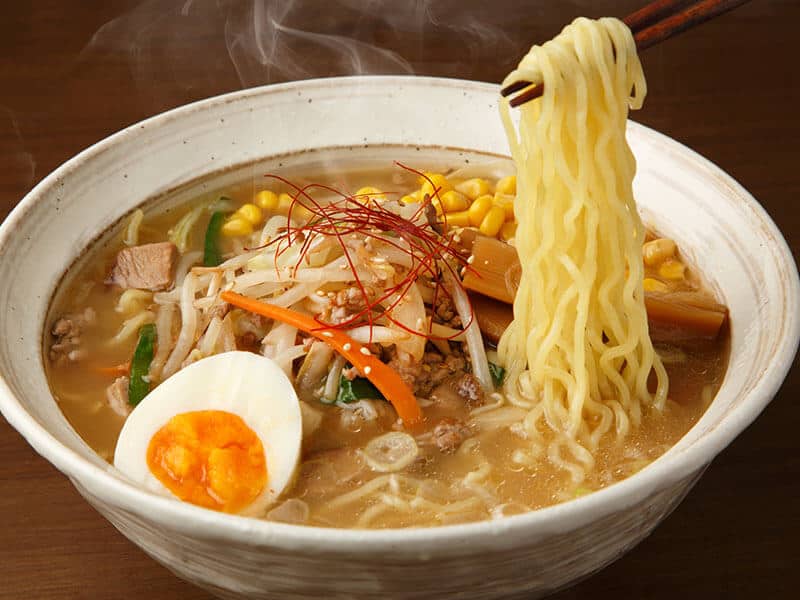
For those who love Japanese noodles, the reputation of ramen is so obvious. When you come to the country of sunrise, you have to try ramen. This noodle has a complex broth that could be a challenge even for experienced chefs.
Usually, ramen has a clear or a bit of a yellow-brown color. When adding miso to ramen, the color will turn darker, which leads to a much deeper and saltier taste. Miso paste also creates a touch of sweetness to ramen broth, making the noodles more flavorful.
Different types of miso will form a special taste for your ramen broth. Try the white miso paste if you love the mildly sweet and savory flavor. Red miso will be an excellent choice for flavorful and robust miso.
Salad Dressing

Although miso paste is famous for making soup, you can utilize it to make a savory twist to your salad. As a salad dressing, miso flavor will complement the flavor of all vegetables and fruits inside the dish.
You can mix miso paste with vinegar and soy sauce for a sour, sweet, and salty dressing. Honey is also a nice choice to give your salad a bit of sweetness. The umami taste from miso will coat your salad dish, which is a new savory dressing.
White, yellow, or red miso can be used to complement the crunchy and fresh veggies. In my opinion, I suggest using a white or yellow miso paste not to overwhelm the whole flavor of your meal.
Making Sauce
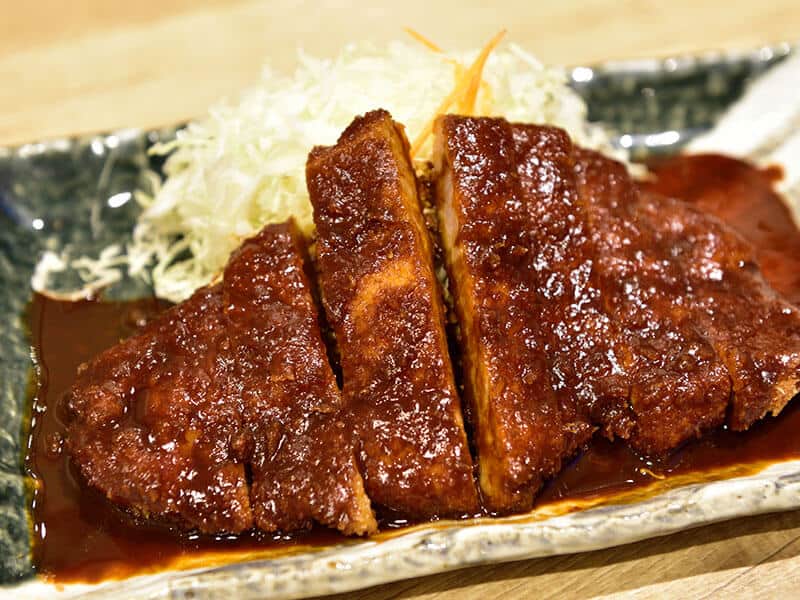
Another use of miso is creating a savory sauce. Miso’s flavorful taste can turn your ordinary sauce into a dazzling one. Also, the thick and a bit crumble miso paste generates a magnificent texture for the sauce.
Miso paste is commonly used to make marinade sauce – a delicious sauce for seasoning BBQ meat or fish. After seasoning properly, the grilled meat will have a pleasant smoky smell with a lovely umami flavor.
Pan sauce is also an excellent way to optimize the savory flavor of miso paste. The juicy broth after frying meat can match gorgeously with miso paste, giving you an appealing thick sauce.
Perfume the dish with your favorite herbs such as rosemary or a simple dash of pepper; your favorite pan sauce will turn into a mesmerizing experience.
Flavorful Miso Recipes To Amaze Your Family
Craving for some fascinating miso ideas? Here are the top 5 delicious miso recipes that you should try to wow your beloved family.
Tofu, Broccoli With Miso Dressing
Crunchy roasted veggies like broccoli and brussels sprouts are great with miso dressing. You will find this dish has pleasant sesame seeds followed by a sour and sweet miso sauce.
Baked tofu with crispy edges and a tender interior will add an amazing texture to this recipe. Finish the dish with crushed almonds and parsley to boost the smell of the whole dish.
Give this delightful tofu and broccoli with miso dressing a try; I bet you will love it.
Miso Mushroom Soup
Mushrooms create an outstanding earthy and mushroomy flavor for miso soup. Its smell and flavor are not too strong, which will complement the umami taste of miso.
Miso mushroom soup has a bouncy texture from sliced mushrooms and a melty-soft texture of tofu. The soup is a refreshing choice after a hard-working day.
Miso Ramen
Miso Ramen has a complex sweetness from chicken broth or chicken stock with a savory taste from miso paste. The outcome will be salty and deep in flavor ramen broth.
Miso ramen has various topping choices like seaweeds, boiled eggs, and corn. I prefer boiled eggs with a runny and creamy egg yolk. Seaweeds and corn will provide an interesting texture to your ramen bowl.
Try this wonderful miso ramen made from delicious chicken broth right now!
Miso Wonton Soup
Miso wonton soup is a harmonization between Chinese and Japanese cuisine. While wonton soup has a luscious wonton with juicy meat and savory broth inside, miso paste gives the broth a prominent sweet-umami flavor.
Bok choy is a suitable veggie for the dish due to its pleasant taste and crunchy flavor. Miso wonton soup is a heartwarming choice for a family meal.
Miso Cod Marinade
The cod meat is soft, juicy with a slight sweetness after being soaked into miso marinade sauce. Bake the fish until you see a beautiful brown color on the surface, toss some chopped scallions to enhance the smell.
In case you want to create a twist in the flavor, adding ginger juice to the marinade sauce will give you an unforgettable experience.
Wow! This cod meat looks so beautiful after baking with miso marinade.
Storing Miso – Is It Simple?
Miso paste is an easy-to-store ingredient. Due to a great amount of salt added in the fermenting process, you can store miso in the fridge for more than a year after the date of production (unopened package).
Miso’s Shelf Life
At Room Temperature
An opened package of miso can last from three months to a year if you store it properly. You should place the miso package in a dark area to avoid direct sunlight. Also, don’t place the miso package near an oven or high-temperature area; it will reduce the quality of your miso.
At your pantry, the taste and color of miso will deteriorate as time goes by, but it is still edible if it doesn’t pass the recommended shelf life. So, the best option is to use up your miso paste before the best-by-date to enjoy the best quality of it.
In The Fridge
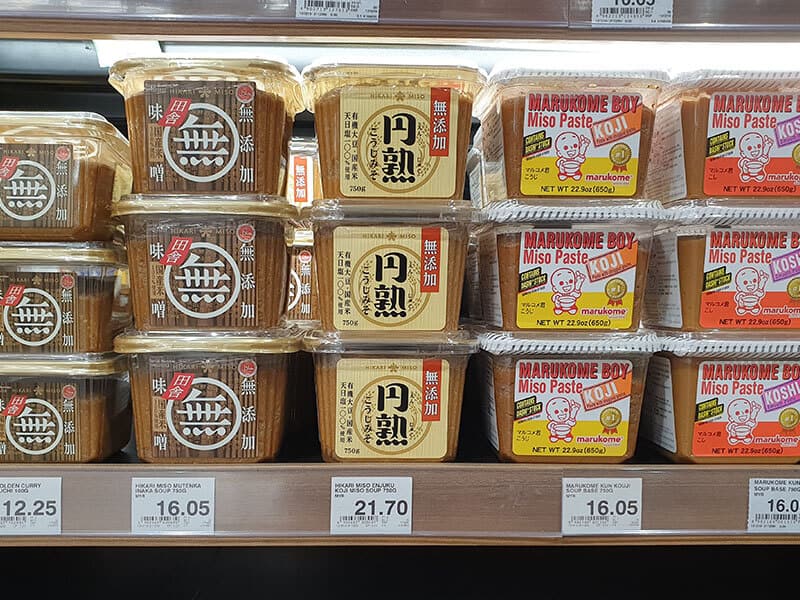
If you open the package, remember to store it in the refrigerator in an airtight container or a sealable plastic bag. The opened miso is best to use around 12 months, depending on the manufacturer.
You can utilize the original miso’s package to keep the miso if it is sealable; In case it isn’t, wrap your miso precisely and put it in a capped container.
In the fridge, the quality of color and taste of miso is strengthened due to the decrease in temperature. In a sealed container, you are able to keep miso paste for up to two years.
In The Freezer
The freezer is the best place to keep miso if you are not going to use it frequently. You can freeze the whole package or divide miso paste into smaller portions for after usages. Miso can last for more than six months in the freezer.
Frozen miso paste is not too hard to scoop out, so feel free to freeze the entire package without hesitation. Suppose you want a more convenient way, take the miso paste out and freeze it in an ice-cube tray. After they are frozen, put them in a container for later usage.
Signs Of Bad Miso Paste
Miso is a fermented product, so it will not go bad if you store it properly. However, an opened package of miso will start reducing its quality; at some point, your miso paste is not great to use anymore.
Naturally, miso paste color will gradually darken through time if stored at room temperature. When you store it for up to one year, the flavor might slightly change, but your miso is still edible.
When you store miso for a long time, it can be attacked by certain bacterias. Therefore, if mold appears on the surface of miso paste and the smell and color change significantly, you should replace your miso with the new one.
Quick Note:
- Prepare a separate spoon for your miso paste, don’t use this spoon together with other ingredients because it will change the miso flavor or, worse, bring bacteria to your miso paste.
FAQs
I bet that you still have some questions about this Japanese specialty. So let’s address those questions to have a clearer picture of miso.
Take A Savory Journey To Explore Japanese Culture
If you are a fan of Japanese cuisine, miso is a flawless representative of this Asian country. Japan is famous for its unique “simple is the best” cuisine, and miso soup is a great example; just a spoon of miso paste can form a complex umami flavor for the whole soup.
“Food is a lens of culture” – Dana Goodyear. Food is the simplest way to know about one’s culture. Just like miso, Japanese people are well-known for simple lifestyles with sophisticated characteristics.
Wow, that is a wrap for today! If you have further exciting facts about miso or Japanese cuisine, feel free to share your opinions in the comment section below! Thank you, and have a lovely weekend!
Reference
- Kobe Jones.. The History and Culture Surrounding Miso Soup – Kobe Jones.
- Public health information (CDC),, Health benefits of isoflavones in functional foods? Proteomic and metabonomic advances.




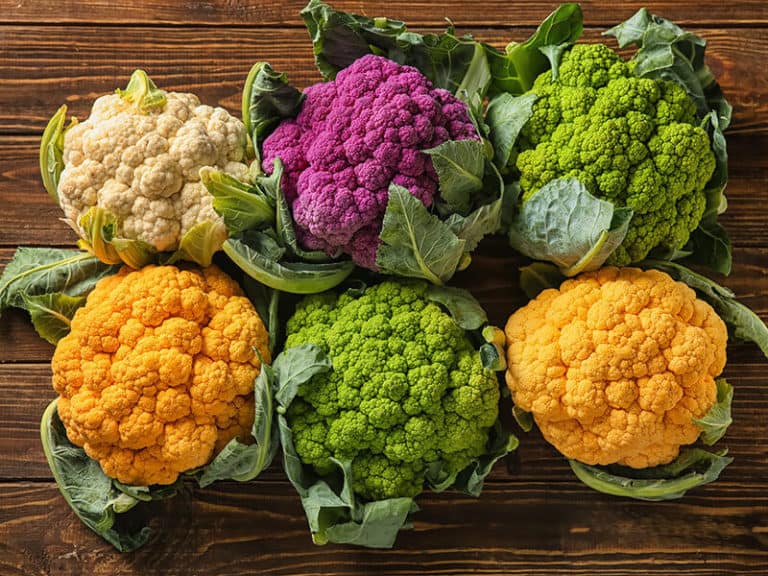
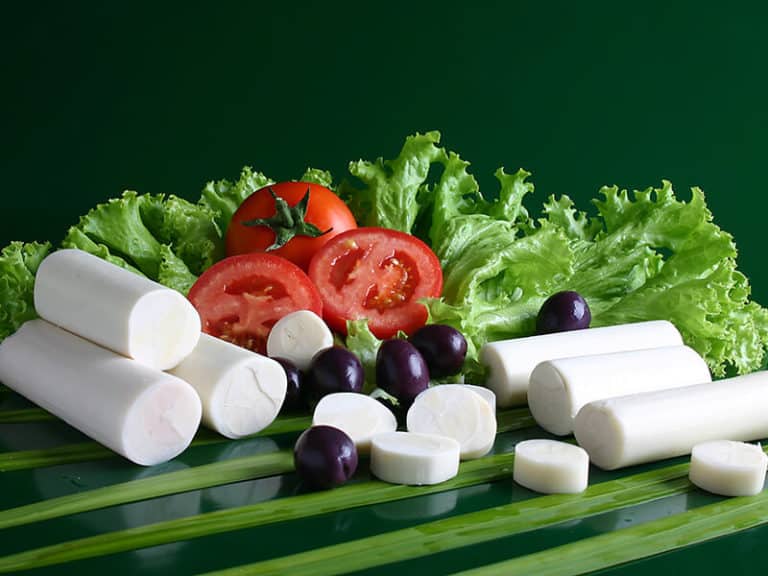

Amanda Collins
Founder and Senior Culinary Editor
Expertise
Culinary Arts and Management, Food Journalism and Critique, Recipe Development and Testing, Global Culinary Traditions, Sustainable Food Practices
Education
Institute of Culinary Education (ICE), New York, NY
Program: Diploma in Culinary Arts
Focus: Intensive hands-on training in culinary techniques, recipe development, and kitchen management, preparing students for professional roles in the culinary industry.
Monroe College, New Rochelle, NY
Program: Associate in Applied Science in Culinary Arts
Focus: Practical culinary skills, including cooking techniques, menu planning, and kitchen operations, with an emphasis on hands-on experience and industry standards.
Amanda Collins is a seasoned chef and food editor with a deep love for global flavors. Trained at the Institute of Culinary Education and Monroe College, and with over 15 years in the culinary field, Amanda has refined her skills in kitchens worldwide. Her background in food studies gives her a unique ability to share both recipes and the cultural stories that shape them.
As senior culinary editor at thebreslin.com, Amanda’s work brings authentic dishes to life, inviting readers to explore new flavors and techniques from around the globe. Her approachable style makes it easy for anyone to bring a bit of the world’s cuisine into their kitchen.